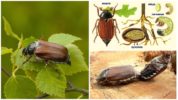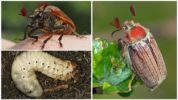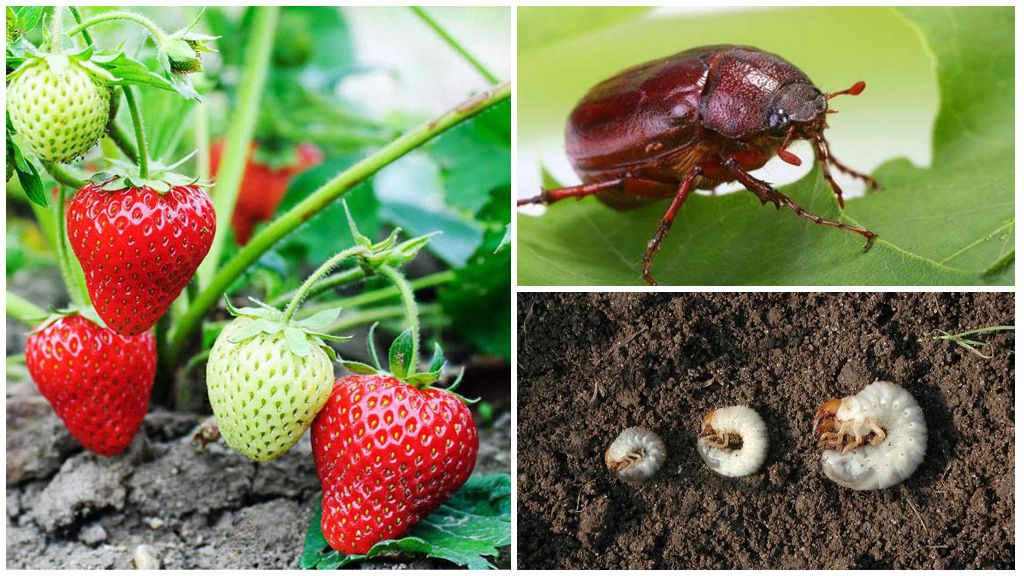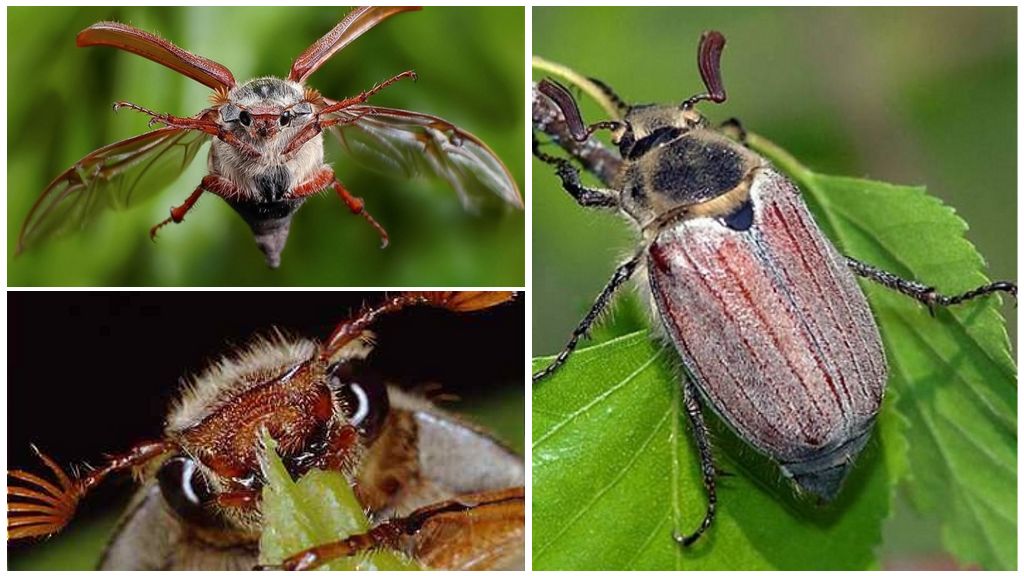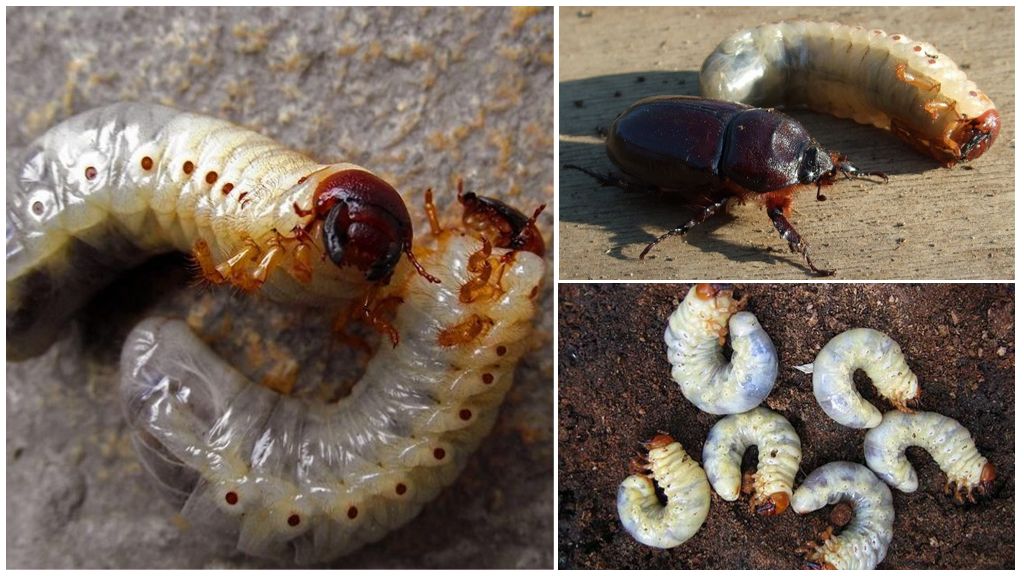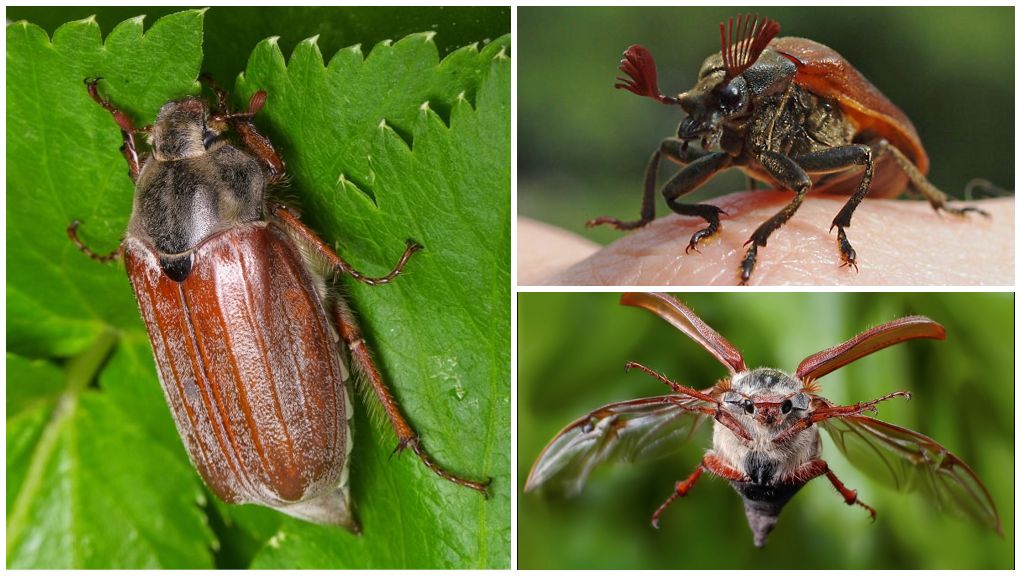- Chafer
- Chafer
Non-loathing cute cockchafer can be heard from afar by a loud buzzing in the crown of trees or near luminous street lamps. Thanks to its beautiful and slightly funny mustache brushes, its interesting appearance attracts the attention of children and adults. But if we are talking about his activities, then all the positive emotions from meeting him immediately disappear. The harm and benefits of the May bug become the subject of controversy between naturalists and gardeners.
Maybug Harm
The question of the dangers and benefits of the May bug is in the first place among people whose activities are related to agriculture. May Khrushchev is another name for a beetle belonging to beetles. They fly great and can fly for 20 km or more. Such mobility provides a wide variety of food for the cheesy. The favorite delicacy of an adult insect is the young leaves of trees and shrubs, their inflorescences and even needles.
Interesting!
When wondering if the May beetles are poisonous, one can safely respond in the negative. The only advantage of this pest is that it does not possess sting ability or emit toxic substances.
To those who do not know whether the May bug is dangerous for a person, its large size and buzz during the flight may seem frightening. Insects themselves are not predators, their attracted by plant foods. The life cycle of an adult lasts only 1.5 - 2 months. The main harm is caused by its larva.
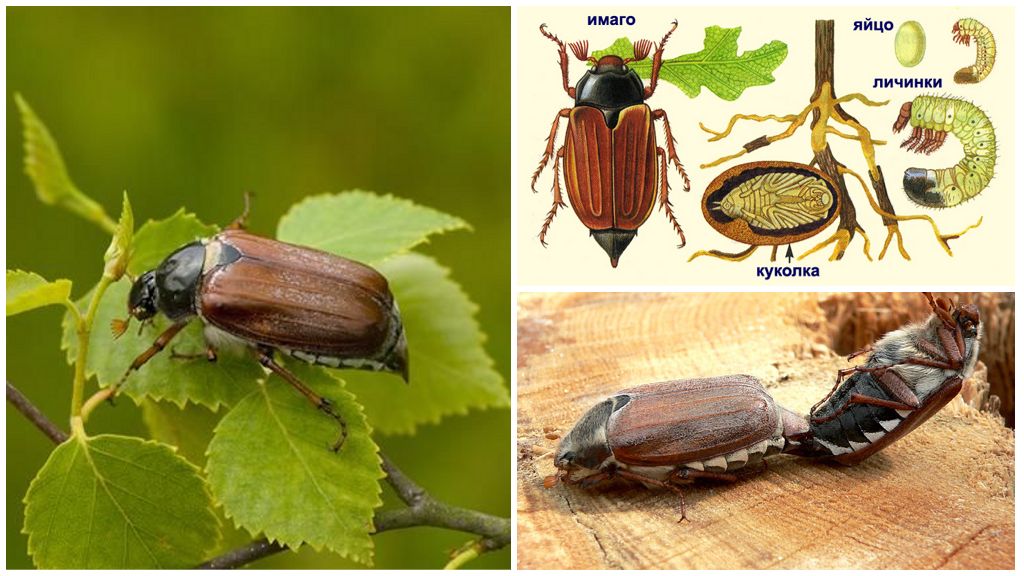
Imago nutrition
The mass appearance of May Khrushchev in the form of an adult - an adult, is timed to the beginning of flowering and the appearance of young foliage on trees. In May, the beetle crawls out of the soil after pupation and immediately begins to eat. In the eastern and northern regions of our country, the main goodies for Khrushchev are:
- young foliage of aspen, poplar, linden, maple;
- catkins of birch and alder;
- needles of larch, spruce, pine;
- inflorescences of apple trees, cherries, plums.
Western raspberries are characterized by raids on plants growing in the southern regions of Europe: grapes, walnuts, hazelnuts, oak, chestnuts, beech, acacia and others. For summer residents, it is well known why the May beetle is harmful to the garden. Gooseberry and blackcurrant bushes can attract insects as another source of nutrition. After a thorough meal and mating, the female beetles lay eggs in the soil, from which a new insect stage, the larva, appears in a few days.
Harm larvae
The nondescript light yellow worm in the first months of its existence is harmless. He has still underdeveloped jaws, and he can eat humus, humus, small roots of herbs for food. The true harm of the Maybug larva becomes noticeable in the second year of its life. After a successful wintering in deeper soil layers, the caterpillar molts and becomes larger. Her jaw can handle the roots of garden crops, such as:
- potatoes;
- beet;
- carrot;
- corn;
- Strawberry;
- bow.
Being in the larval stage, the beetle is especially dangerous in the garden. Given the large number of caterpillars, you can imagine what harm they can cause. In the third year of their life, they molt again and become even more gluttonous. Now they have the roots of young trees on their teeth.
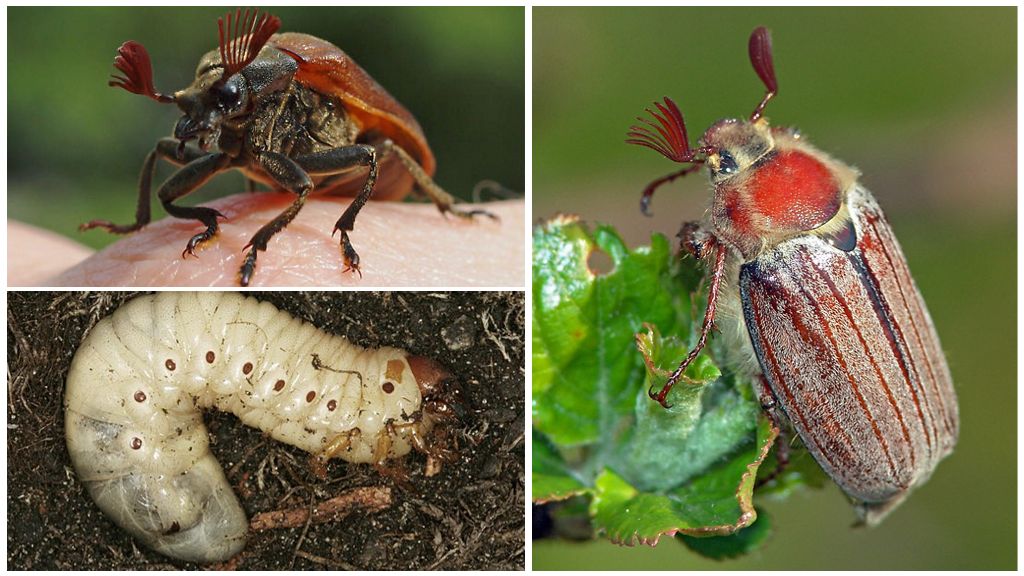
On a note!
One maych larva at 3 years of her life, she is capable of destroying the roots of a two-year tree in a day.
Having successfully wintered the next winter, in the fourth or fifth year of its life, the larva pupates and regenerates by the next spring into an adult insect. Such a long cycle of life of the khrushch makes it one of the most dangerous pests of nature.
The benefits of the summer beetle
It is difficult to underestimate the destructive activity of this pest in relation to trees and other plants. Khrushchev has not performed useful actions in its entire life, except for its use in fishing.
Inveterate fishermen and just amateurs often use greasy caterpillars as bait on a fishing rod hook. Such a bait is attractive to many predator fish:
- chub;
- ide;
- perch;
- bream;
- zander.
On a note!
Using an adult is no less successful for bait fish. Just throw a few bugs into the water and wait until they become lunch for the future catch. Then you can safely throw the fishing rod into a lured place. It is recommended to put the bug on the hook. The insect will flounder in the water and attract fish.
The collection of bait is as follows:
- Adult pests can be collected manually if you shake the branches of a tree.
- Many individuals are easy to find near streetlights. In the twilight hours they are attracted by the bright light of the lamp, burning about which, the beetles fall to the ground.
- The extraction of larvae will not take much time for the fisherman, if you dig the top layer of soil in the garden or garden between the beds. Greasy bait is collected manually in a jar of earth.
This method of applying pests can significantly reduce their number within their suburban area or garden. But getting rid of all those responsible for the death of plants is very difficult. Only using an integrated approach to their destruction, you can save most of the garden crops.
